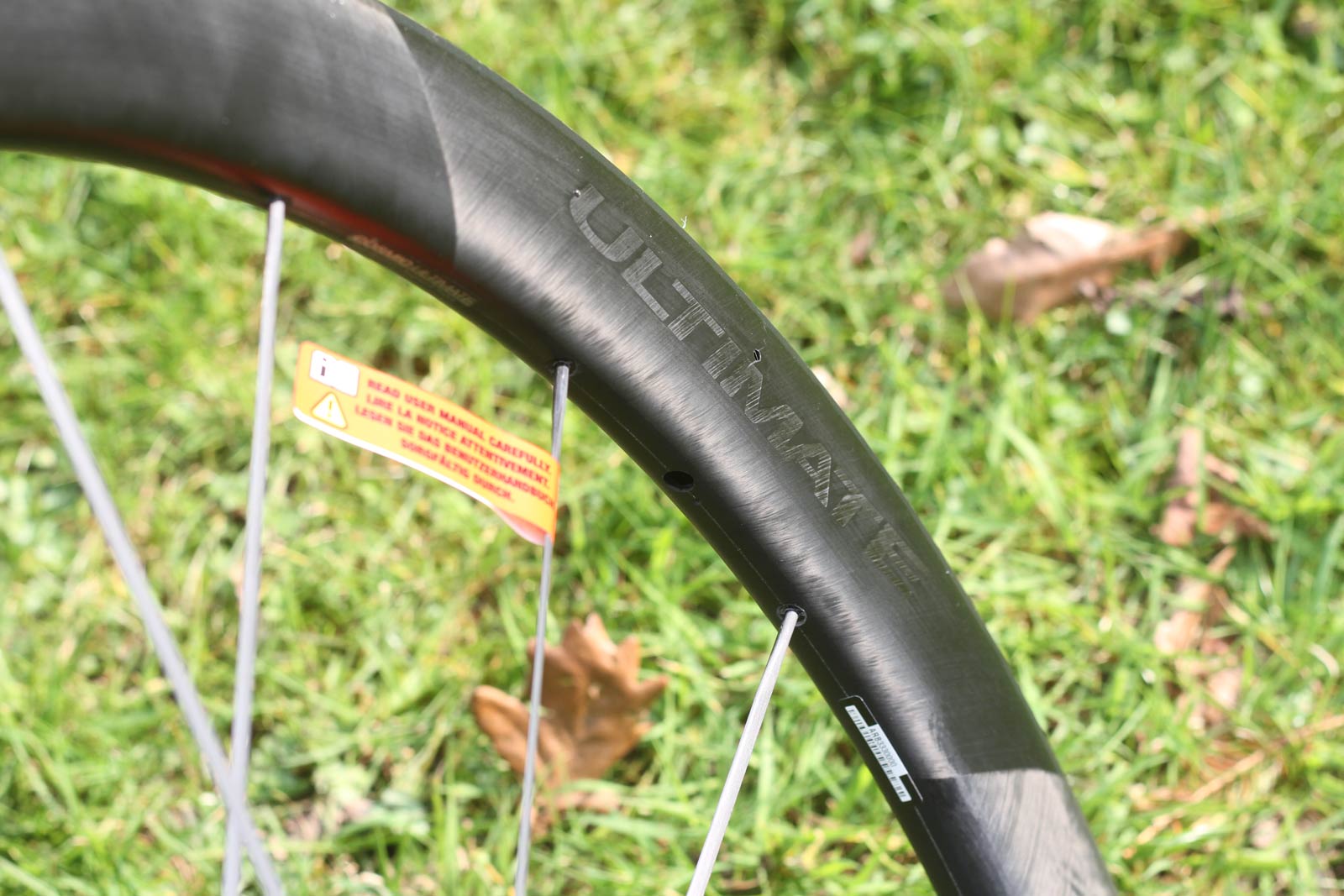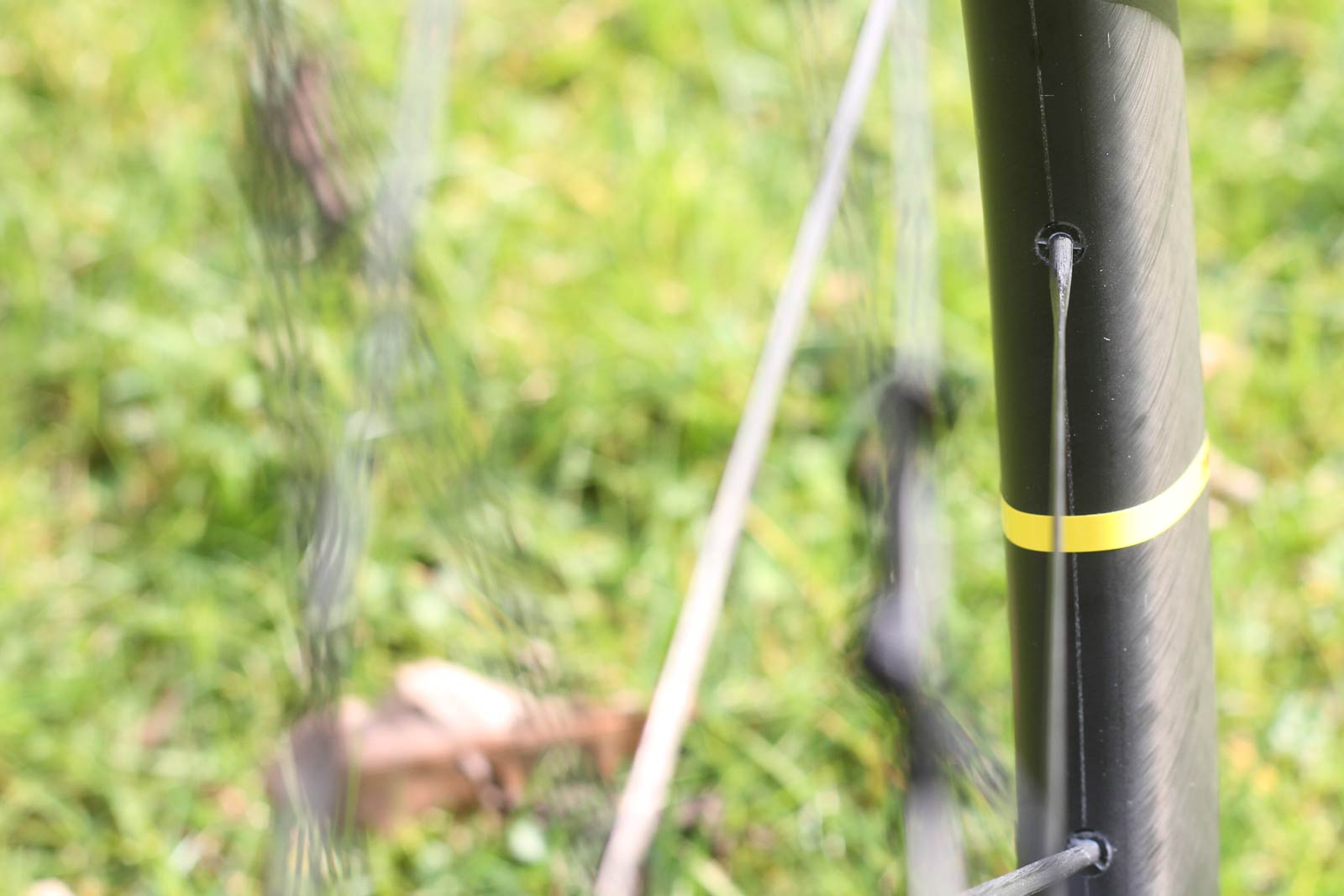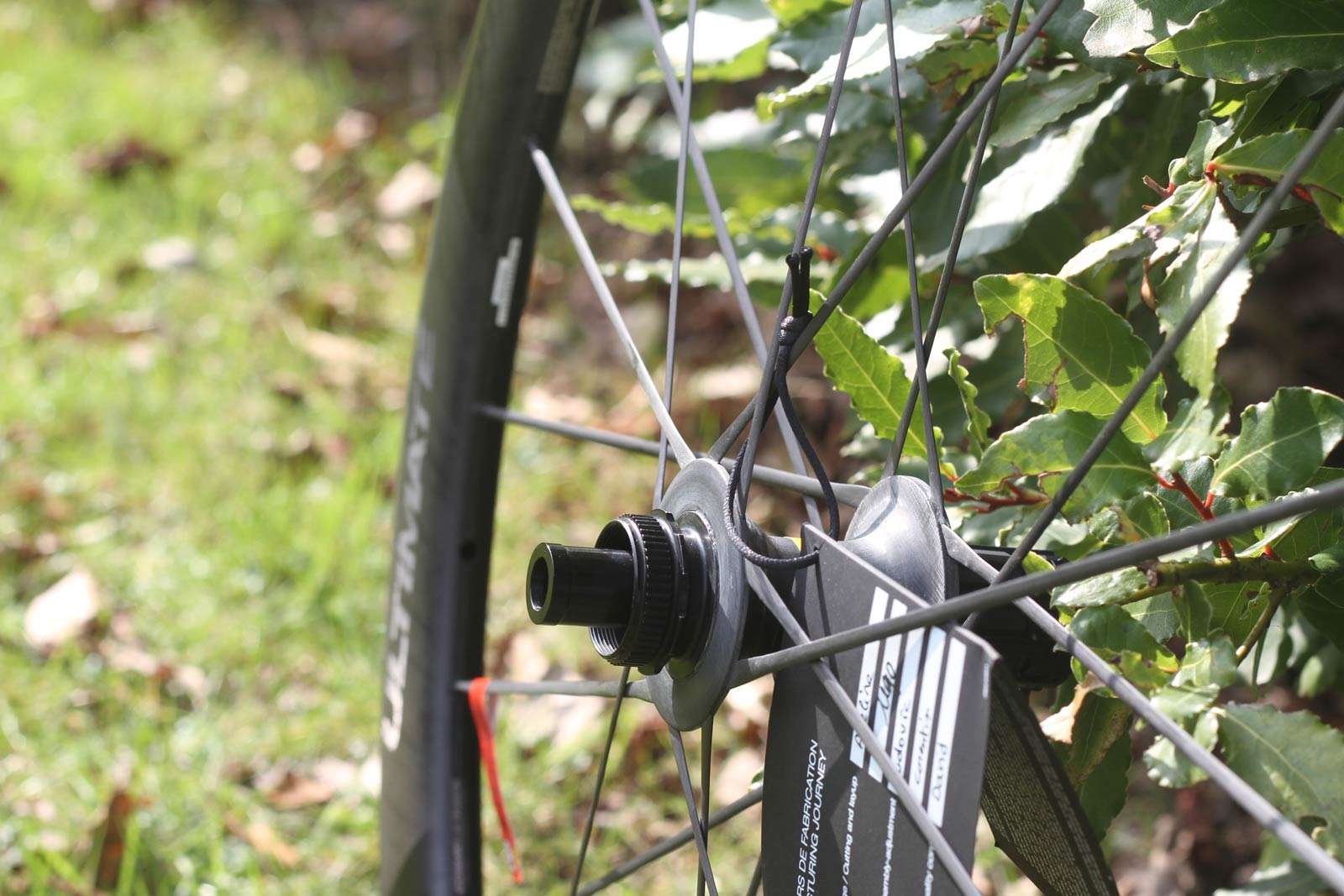Mavic was showing its latest and greatest wares at the CORE Bike show earlier this week. We stopped by to get the low-down on a new carbon wheelset designed, manufactured and tested at their new HQ in Annecy, France; the Mavic Cosmic Ultimate UST Disc Carbon Road Wheels weighing a claimed 1225g.
Mavic Cosmic Ultimate UST Disc
Mavic’s latest iteration of the long-standing Cosmic Ultimate wheelset goes tubeless, with an aero-friendly 45mm rim depth. The internal width of the carbon rim is 19mm, with a 27mm external width designed to maintain an aerodynamic profile between the rim and 25mm or 28mm tires.
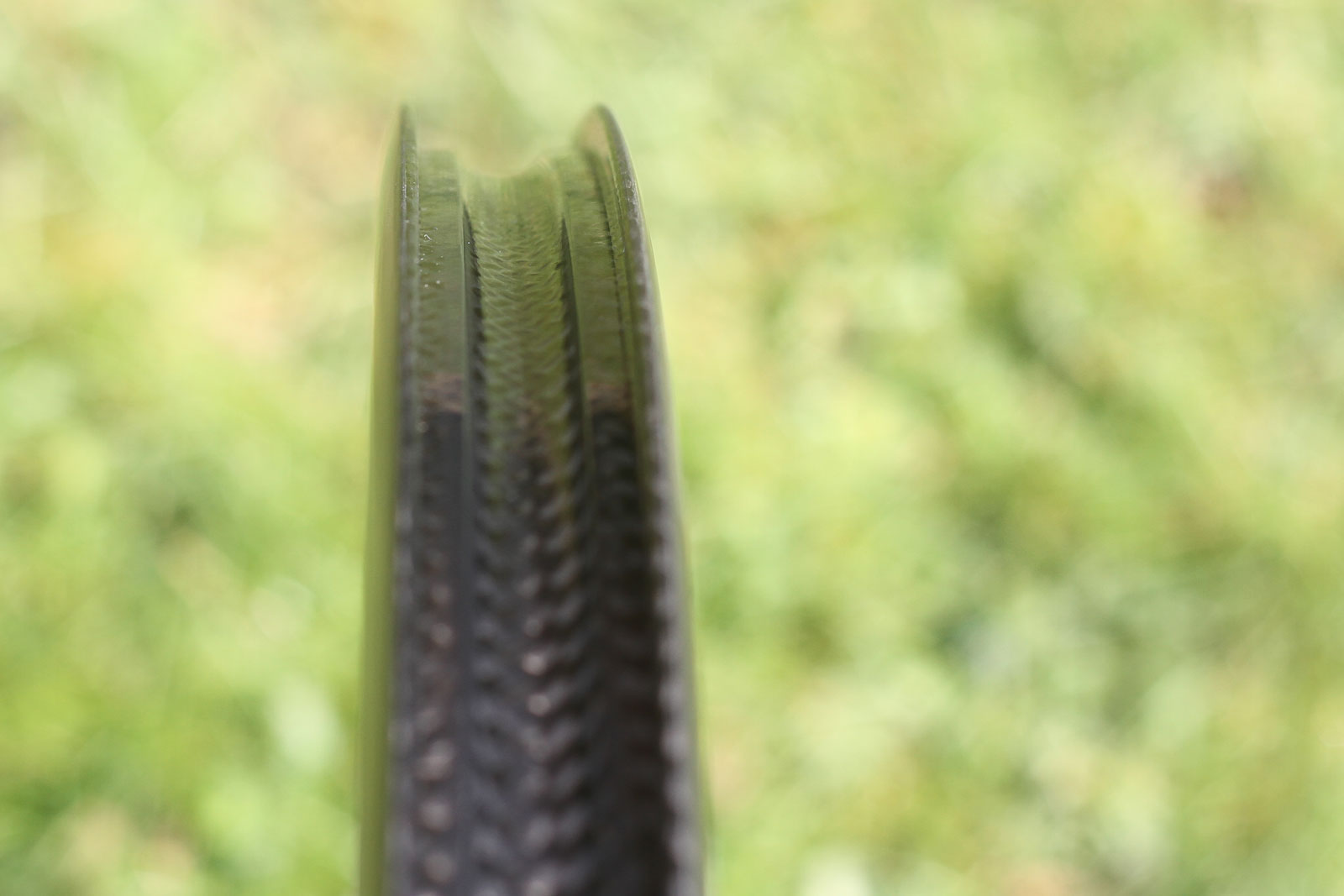
The complete wheelset has a claimed weight of 1225g, retailing at £3200. That’s pretty good value for the grams, especially when you consider that the Obermayer EVO Disc Wheelset from Lightweight will set you back £6,599 and weighs 5g more.
Made at the new Mavic HQ in Annecy, France, every step of wheel production is traceable back to each engineer that came into contact with it during its manufacturing journey.
The wheel is built with the rim and spokes first; the hub with its high, thin carbon flanges, is the last piece to go in. Each of the 20 elliptical carbon fiber spokes is one piece, running from one side of the rim to the other. A small carbon sleeve is wrapped over each side, then small carbon strips and a glue is applied followed by a UD2 finish on top. The rim is then put into a small oven and baked to mold it all together.
Once everything cools down, and is check and tensioned, the hub is then inserted between the spokes. An additional piece of carbon is then added to the outside of the hub shell, on top of the carbon spokes, and subsequently glued and baked once more.
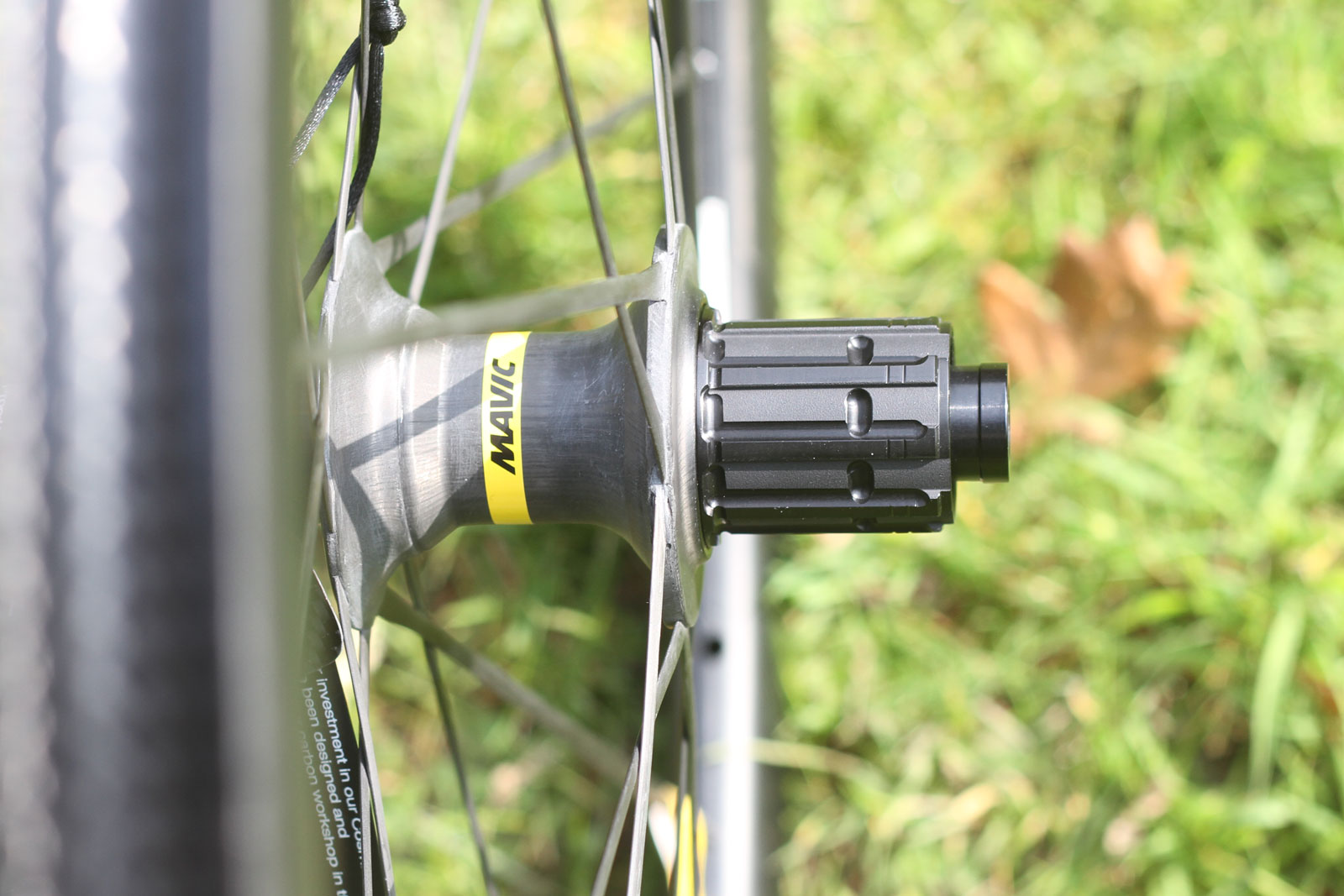
Inside the carbon hub shells, the axles are paired with automatically adjusted sealed cartridge bearings for preloading. In the rear, the ID360 freewheel system engages at 9° with 40 POE. The hubs are thru-axle compatible (12mm x 100mm up front and 12mm x 142mm in the rear) and made for Center Lock brake rotors.
Pricing & Availability
The Mavic Cosmic Ultimate UST Disc wheelset retails at £3200. Front and rear wheels can be purchased separately; the front for £1,420 and the rear for £1,780 with a SRAM or Shimano freehub body. The wheels are currently undergoing production and will be available to order by the end of May 2022.

As with all carbon road wheels from Mavic, this one comes with a lifetime warranty if registered within two months of the original purchase date. They also have a crash replacement programme whereby the cost of a new wheel is 50% of the RRP if the wheel is under 2 years old. The discount reduces the older the wheel is; you get 40% off is the wheel is 3-5 years old, and 30% off if the wheel is 5-10 years old.

